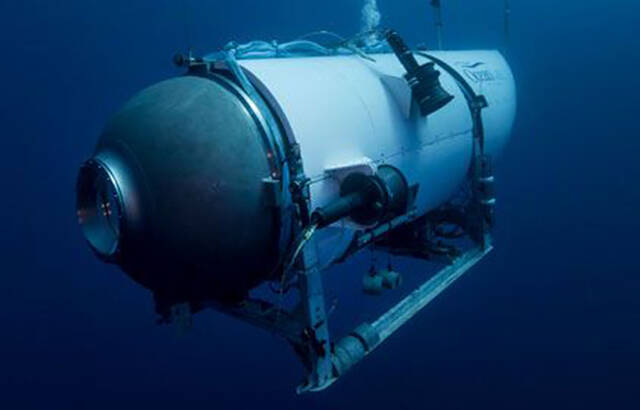Lori Falce: Titanic loss prompted change. So should Titan's
The Titanic often is thought of as the quintessential example of a shipwreck.
It isn’t the only boat to sink. It isn’t the only ocean liner to meet a watery end. In fact, the famously “unsinkable” sunken ship was part of a family of three identical sisters of the White Star Line.
The Olympic was launched in 1911. The Titanic followed in 1912 and the Britannic in 1914. The Titanic was brought down by an iceberg on her maiden voyage. The Britannic hit a mine in the Aegean Sea while being used as a hospital ship in 1916. It took the Titanic two hours and 40 minutes to sink. The Britannic reached the bottom in under an hour.
When the Titanic sank, there were 2,224 people on board. Of those, 1,514 died. The Britannic had 1,066 people between medical providers and crew. Only 30 perished.
The difference between the two was more than just four years and a world war. It was regulation.
The Titanic famously did not have enough lifeboats for its capacity. It carried just 20, with enough room for fewer than 1,200 people. Between that and poorly organized boarding, only 710 people were saved.
Hearings in the aftermath of the sinking prompted changes that saved countless lives afterward. The Britannic carried 48 lifeboats, enough to save every person the ship could possibly hold, plus 300 more. Despite having only about a third of the time to evacuate, the Britannic launched 75% more lifeboats, getting 35 in the water.
The Titanic’s legacy can still be felt today. Take a cruise, and one of the first things that will happen on board is a safety drill where you are directed to your muster station and walked through exactly what will happen in an emergency.
That should be the legacy of the Titan, as well.
For days, the world has followed the morbid irony of a submersible craft from private company OceanGate Inc. being lost as it brought visitors who paid $250,000 apiece to visit the silently rusting bones of the Titanic. On Thursday, the Titan was confirmed wrecked and the five people aboard killed.
The craft was not certified. It was questionably built with camping supplies and utilized a Logitech game controller, factors that were viewed with alternating amusement and horror. The New York Times reported that, in 2018, an employee warned of safety concerns but was told OceanGate was “unwilling to pay” for safety assessments on the craft that would travel 2.5 miles below the ocean — deeper than whales and other sea creatures can dive.
The loss of the Titan should lead to ironclad requirements for private companies which traffic in such dangerous tourism to meet minimum safety thresholds.
Doing so should not interfere with exploration of history or advancement of science. Instead, they should promote it, the way that providing enough lifeboats didn’t end ocean travel but just made it safer.
Lori Falce is the Tribune-Review community engagement editor and an opinion columnist. For more than 30 years, she has covered Pennsylvania politics, Penn State, crime and communities. She joined the Trib in 2018. She can be reached at lfalce@triblive.com.
Remove the ads from your TribLIVE reading experience but still support the journalists who create the content with TribLIVE Ad-Free.

